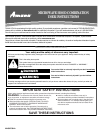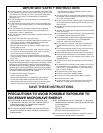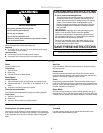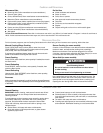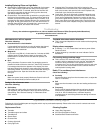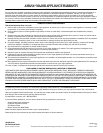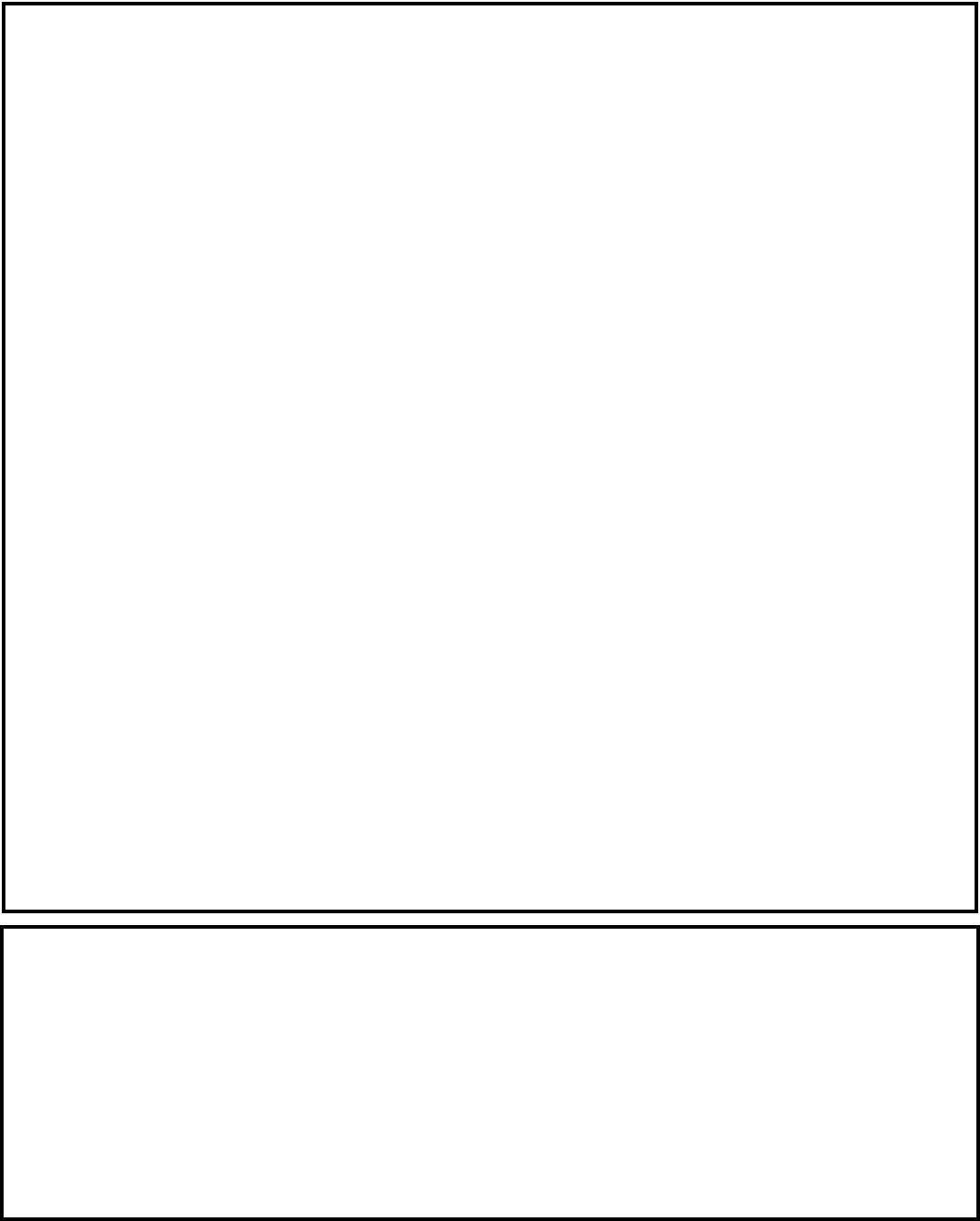
2
PRECAUTIONS TO AVOID POSSIBLE EXPOSURE TO
EXCESSIVE MICROWAVE ENERGY
(a) Do not attempt to operate this oven with the door open
since open-door operation can result in harmful exposure
to microwave energy. It is important not to defeat or
tamper with the safety interlocks.
(b) Do not place any object between the oven front face and
the door or allow soil or cleaner residue to accumulate on
sealing surfaces.
(c) Do not operate the oven if it is damaged. It is particularly
important that the oven door close properly and that there
is no damage to the:
(1) Door (bent),
(2) Hinges and latches (broken or loosened),
(3) Door seals and sealing surfaces.
(d) The oven should not be adjusted or repaired by anyone
except properly qualified service personnel.
IMPORTANT SAFETY INSTRUCTIONS
SAVE THESE INSTRUCTIONS
■ Use the microwave oven only for its intended use as described
in this manual. Do not use corrosive chemicals or vapors in the
microwave oven. This type of oven is specifically designed to
heat, cook, or dry food. It is not designed for industrial or
laboratory use.
■ As with any appliance, close supervision is necessary when
used by children.
■ Do not operate the microwave oven if it has a damaged cord
or plug, if it is not working properly, or if it has been damaged
or dropped.
■ The microwave oven should be serviced only by qualified
service personnel. Call an authorized service company for
examination, repair, or adjustment.
■ See door surface cleaning instructions in the “Microwave Oven
Care” section.
■ To reduce the risk of fire in the oven cavity:
– Do not overcook food. Carefully attend the microwave oven
when paper, plastic, or other combustible materials are
placed inside the oven to facilitate cooking.
– Remove wire twist-ties from paper or plastic bags before
placing bags in oven.
– If materials inside the oven ignite, keep oven door closed,
turn oven off, and disconnect the power cord, or shut off
power at the fuse or circuit breaker panel.
– Do not use the cavity for storage purposes. Do not leave
paper products, cooking utensils, or food in the cavity when
not in use.
■ Liquids, such as water, coffee, or tea are able to be overheated
beyond the boiling point without appearing to be boiling. Visible
bubbling or boiling when the container is removed from the
microwave oven is not always present. THIS COULD RESULT
IN VERY HOT LIQUIDS SUDDENLY BOILING OVER WHEN
THE CONTAINER IS DISTURBED OR A SPOON OR OTHER
UTENSIL IS INSERTED INTO THE LIQUID.
To reduce the risk of injury to persons:
– Do not overheat the liquid.
– Stir the liquid both before and halfway through heating it.
– Do not use straight-sided containers with narrow necks.
– After heating, allow the container to stand in the microwave
oven for a short time before removing the container.
– Use extreme care when inserting a spoon or other
utensil into the container.
■ Oversized foods or oversized metal utensils should not
be inserted in the microwave oven as they may create a
fire or risk of electric shock.
■ Do not clean with metal scouring pads. Pieces can burn
off the pad and touch electrical parts involving a risk of
electric shock.
■ Suitable for use above both gas and electric cooking
equipment.
■ Intended to be used above ranges with maximum width
of 36" (91.44 cm).
■ Clean Ventilating Hoods Frequently - Grease should not
be allowed to accumulate on hood or filter.
■ Do not use paper products when appliance is operated
in convection, combination, grill or “PAN BROWN”
mode (on models with such features).
■ Do not store any materials, other than manufacturer’s
recommended accessories, in this oven when not in
use.
■ Do not store anything directly on top of the microwave
oven when the microwave oven is in operation.
■ When flambeing foods under the hood, turn the fan on.
■ Use care when cleaning the vent-hood filter. Corrosive
cleaning agents, such as lye-based oven cleaners, may
damage the filter.
■ Do not cover or block any openings on the microwave
oven.
■ Do not store this microwave oven outdoors. Do not use
the microwave oven near water - for example, near a
kitchen sink, in a wet basement, or near a swimming
pool, or similar locations.
■ Do not immerse cord or plug in water.
■ Keep cord away from heated surfaces.
■ Do not let cord hang over edge of table or counter.
■ Do not mount over a sink.
■ Do not cover racks or any other part of the oven with
metal foil. This will cause overheating of the oven.



